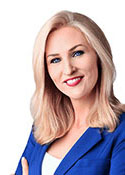Franklin
Margin: Labor 5.1%
Region: Outer Hobart, Tasmania
In a nutshell: Encompassing Hobart east of the Derwent and on the city’s southern fringe, Franklin is all that remains of a Labor empire that covered the state through most of the noughties.
Candidates in ballot paper order

|
TIM SANDERSON MARTINE DELANEY AMANDA-SUE MARKHAM JULIE COLLINS GEORGE JAMES MUSKETT |
The only one of four Labor-held Tasmanian seats that the party was able to retain in 2013, Franklin covers the suburbs of Hobart on the eastern bank of the Derwent River along with Kingston on the city’s southern fringe, small towns further to the south, and the unpopulated southern part of the World Heritage area in Tasmania’s south-west. The remainder of Hobart, including the city centre and the suburbs on the river’s western bank, constitutes the electorate of Denison. As one of Tasmania’s constitutionally mandated five House of Representatives seats, Franklin has an enrolment of roughly three-quarters the national average, and an uninterrupted history going back to the state’s division into single-member electorates in 1903.
Labor first won Franklin at a by-election held two months after the election of Jim Scullin’s government in 1929, then lost it again amid the party’s debacle of 1931. The seat subsequently changed hands in 1934, 1946, 1969 and 1975, then remained in Liberal hands throughout the Fraser years and the first 10 years of the Hawke-Keating government. Labor finally won the seat when colourful Liberal member Bruce Goodluck retired in 1993, which together with a strong statewide result for Labor delivered a decisive 9.5% swing to Harry Quick. Quick maintained the seat with only mild swings either way at subsequent elections, although there were occasional suggestions he might be brought undone by internal party machinations. When his preselection appeared threatened ahead of the 2004 election, Quick was able to secure his position partly by indicating that he might run as an independent.
After choosing his own time of departure at the 2007 election, Quick sought to keep the seat out of factional hands by promoting his staffer Roger Joseph as his successor. This was thwarted when a deal assigned Franklin to Kevin Harkins, state secretary of the Left faction Electrical Trades Union, and Bass to the Right-backed Steve Reissig. Objecting that Harkins was a “right thuggish bastard” who would lose the seat, Quick declared that he planned to vote for the Greens. His attacks drew blood as newly anointed Labor leader Kevin Rudd sought to distance the party from unsavoury union associations, with Harkins carrying baggage from the 2003 Cole royal commission into the building and construction industry. Harkins’ position ultimately became untenable in July 2007 when the Australian Building and Construction Commission brought charges against him over an illegal strike. When he won preselection for the Senate ahead of the 2010 election, he was again rolled by the intervention of Kevin Rudd.
With Harkins out of the picture and the 2007 election looming, the preselection was referred to the party’s national executive, which maintained the factional balance by choosing the Left’s Julie Collins, the state party secretary and a strongly performing though unsuccessful candidate at the March 2006 state election. The loss of Quick’s personal vote combined with the manner of his departure contributed to a 3.1% swing against Labor, one of only four such swings in the country at that election. Coming off a suppressed base, Collins went on to enjoy a 6.8% swing at the 2010 election, the party’s second strongest result of the election after the Adelaide seat of Kingston. She then emerged Labor’s only lower house survivor in the face of a 9.7% statewide swing that unseated sitting members in Bass, Braddon and Lyons, and reduced her own margin from 10.8% to 5.1%.
Collins was made a parliamentary secretary after the election, and progressed to the outer ministry as Community Services Minister in December 2011. After backing Kevin Rudd’s successful leadership bid in late June she was promoted to cabinet, adding housing and homelessness, the status of women and indigenous employment to her existing area of responsibility. She was relegated to outer shadow ministry status after the 2013 election defeat, taking on the portfolios of regional development, local government and employment services. Her Liberal opponent for the coming election is Amanda-Sue Markham, an intensive care unit nurse.
 Labor was on the offensive early in the campaign when the federal and Tasmanian state governments announced over $22 million in grants from money freed up by the demise of a proposed tourism visitors centre at the Cadbury’s factory in the northern Hobart suburb of Claremont. The bulk of the new projects were in the three marginal Liberal seats in the state’s north, with $6.3 million going to Lyons, $5.6 million to Bass and $3.6 million to Braddon, compared with $2.9 million in Franklin and $3.6 million in Denison.
Labor was on the offensive early in the campaign when the federal and Tasmanian state governments announced over $22 million in grants from money freed up by the demise of a proposed tourism visitors centre at the Cadbury’s factory in the northern Hobart suburb of Claremont. The bulk of the new projects were in the three marginal Liberal seats in the state’s north, with $6.3 million going to Lyons, $5.6 million to Bass and $3.6 million to Braddon, compared with $2.9 million in Franklin and $3.6 million in Denison.
 Together with the other four Tasmanian electorates, Franklin was the subject of a ReachTEL poll of around 600 respondents on May 11 for the Sunday Tasmanian newspaper. The result suggested a 2% swing away from Julie Collins, who nonetheless retained a lead of 54-46 on two-party preferred. The primary votes were Labor 34.3%, Liberal 40.7%, Greens 15.9% and Jacqui Lambie Network 3.2%.
Together with the other four Tasmanian electorates, Franklin was the subject of a ReachTEL poll of around 600 respondents on May 11 for the Sunday Tasmanian newspaper. The result suggested a 2% swing away from Julie Collins, who nonetheless retained a lead of 54-46 on two-party preferred. The primary votes were Labor 34.3%, Liberal 40.7%, Greens 15.9% and Jacqui Lambie Network 3.2%.
Analysis by William Bowe. Read William’s blog, The Poll Bludger.


